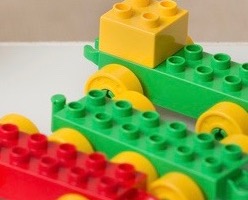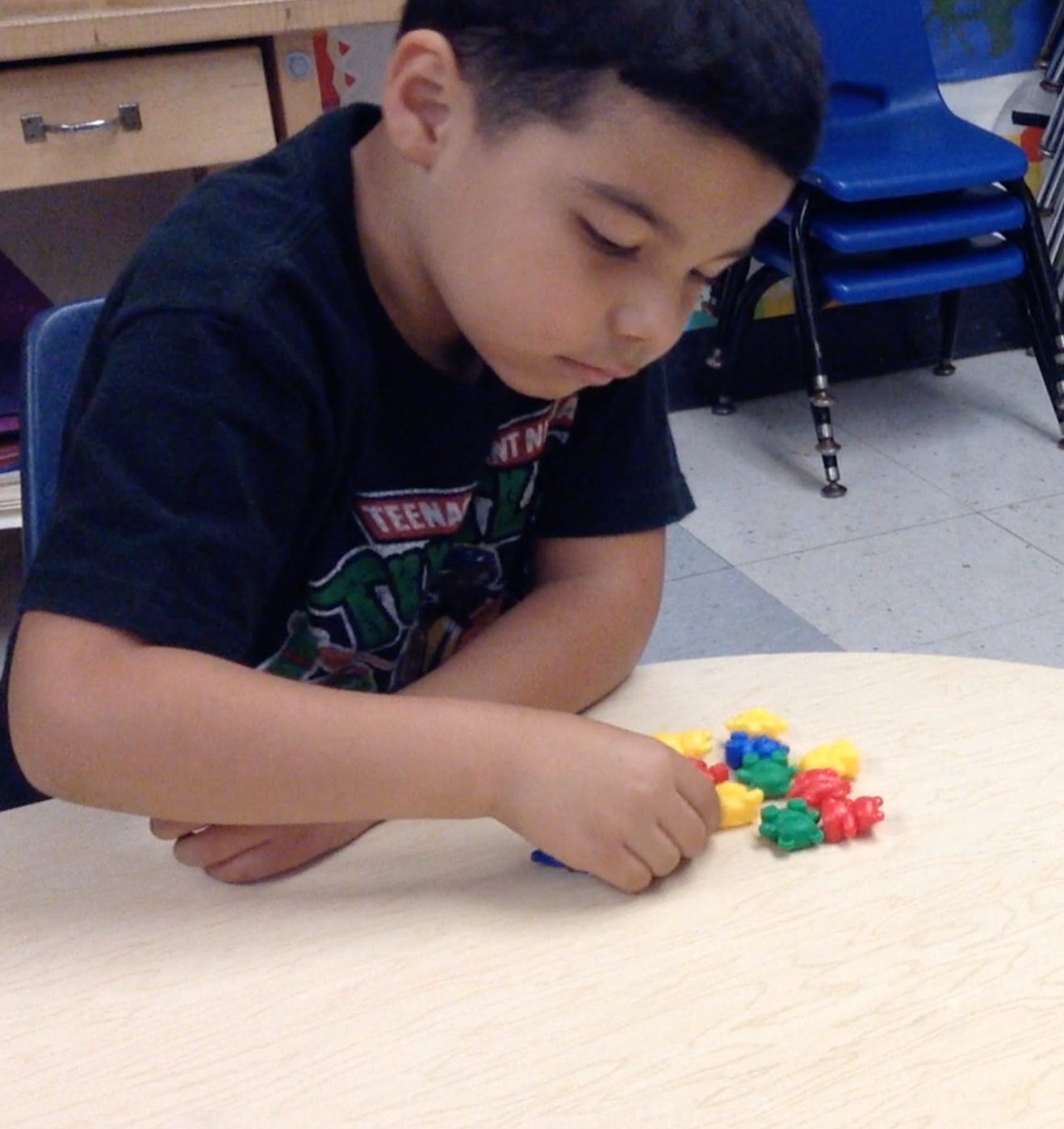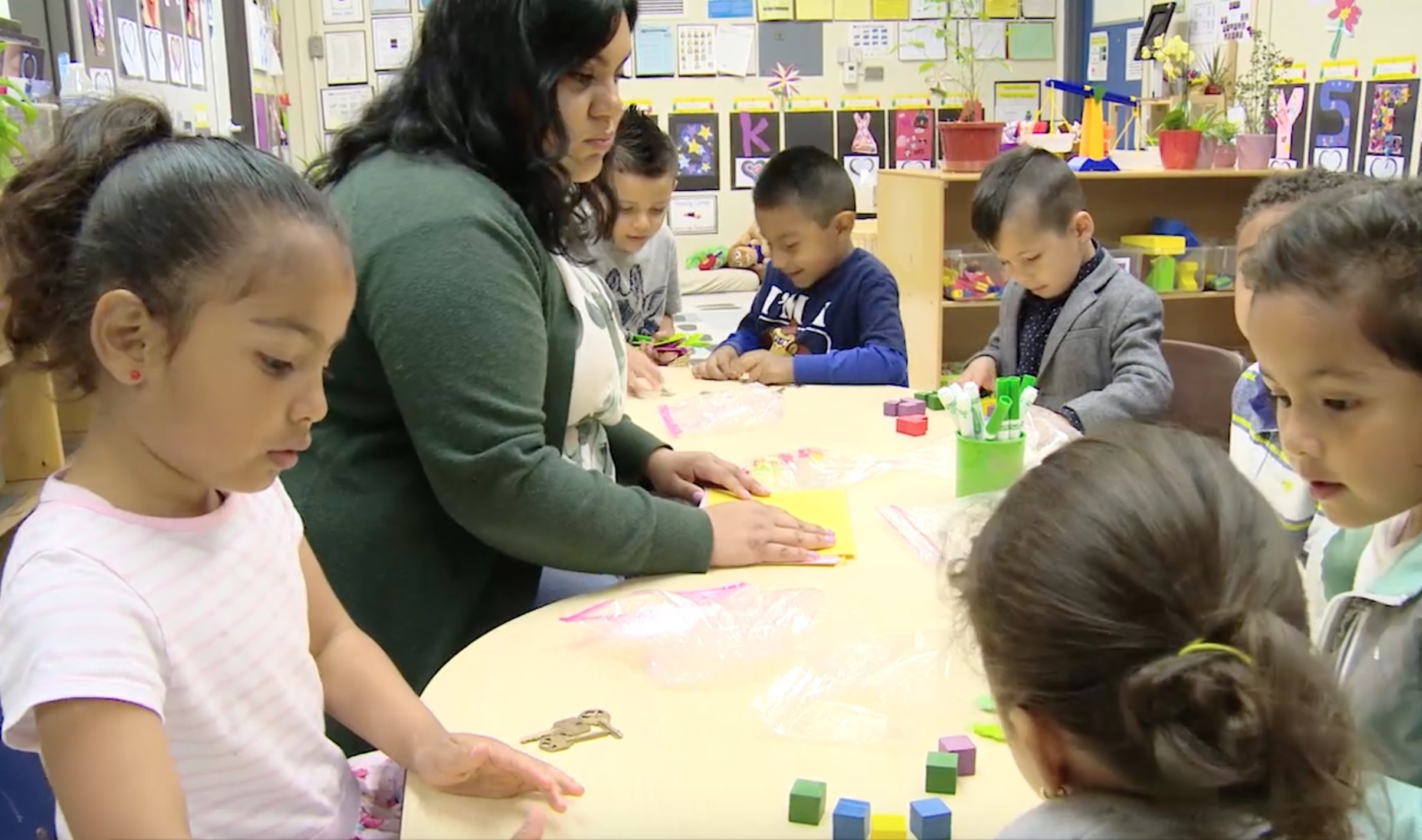This piece explores the intuitive strategies that young children use to solve addition, subtraction, multiplication, and division problems.
by Megan Franke
 Young children solve problems intuitively. They know that when crackers are eaten, they take away. They know that when a child is given more legos, the legos join together. When they hear a story problem they naturally try to act out the problem using counters. Attending to what happens in the story enables children to figure out what the problem is about and what to do to solve it. The more explicit the action, the easier it is to solve. Also, the more the children understand the context of the story, the easier it is to solve. When story problems build on actions and situations children know and materials are provided, children can often readily solve simple addition, subtraction, multiplication and division problems.
Young children solve problems intuitively. They know that when crackers are eaten, they take away. They know that when a child is given more legos, the legos join together. When they hear a story problem they naturally try to act out the problem using counters. Attending to what happens in the story enables children to figure out what the problem is about and what to do to solve it. The more explicit the action, the easier it is to solve. Also, the more the children understand the context of the story, the easier it is to solve. When story problems build on actions and situations children know and materials are provided, children can often readily solve simple addition, subtraction, multiplication and division problems.
The strategies children use to solve story problems are robust and are used across many different types of problems. Knowing the set of possible strategies they may use can help you know what to listen for as they solve problems, and can support instructional decision making. Here we are going to focus on the two types of strategies that are most common for young children: direct modeling and counting strategies.
Direct Modeling
Alma and her teacher are sitting on the carpet together, and the teacher poses three story problems. Alma has counters in front of her. The teacher reads the problems aloud to her as many times as she needs. Alma solves each problem by doing what the problem describes; she uses her counters to map out the action without any prompting from the teacher.
Alma, you had 3 Legos. Your dad gives you 4 more Legos. How many Legos will you have in all?
Alma counts out three counters and puts them in a pile. She then counts out four counters and puts them in their own pile. She pushes her two piles together and counts them all saying, “One, two, three, four, five, six, seven".
Alma had 6 Legos. She gave 2 Legos to her brother. How many Legos does Alma have left?”
Alma counts out six counters and puts them in a pile. She takes two out of her pile and moves them across the floor and away from her original pile. She counts the counters that are left saying, “One, two, three, four. Four left. I have four left.”
We have 3 boxes. If there are 2 Legos in each box, how many Legos do we have in our boxes?
Alma gets up and finds three pieces of paper. She tells the teacher that those are her boxes. She puts two counters on each paper. She then points to each counter and counts, “One, two, three, four, five, six."
In each of these situations Alma solved the problem in a way that matched the problem situation itself. She followed what the problems said and counted out the sets. In the first problem, she made her set of three and then her set of four and then showed that she knew the action in the problem was joining, pushing the sets together and counting them all. Since she made the set of three and the set of four and counted them all together, we would say she directly modeled the action in the problem.
Alma used direct modeling for each of the three problems. In the second problem she made the set of six, took away the set of two, and counted those remaining—another count-all strategy. In the third problem (a multiplication problem), she created the groups by using pieces of paper, put two Legos on each, and counted them all.
Direct modeling is a robust strategy that children often use intuitively to successfully solve problems that we might not even consider giving at a young age (such as the multiplication problem Alma solved above, or even multi-step problems that involve cookies in boxes and eating some of them). Experience solving problems by directly modeling the action paves the way for more sophisticated strategies to emerge.
Counting Strategies
Now let’s look at where Alma would go next in her solving of these problems. Once she has had experience solving problems like these by direct modeling, she will eventually stop making her initial set and use a counting strategy.
Alma, you had 3 Legos. Your dad gives you 4 more Legos. How many Legos will you have in all?
Alma starts with three (in her mind), then grabs four counters. As she touches each one she says, “four, five, six, seven. I have seven Legos.” She could also keep track on her fingers instead of using counters. Here she would count “four, five, six, seven", putting up one finger each time until she had four fingers up, signaling that she is finished counting.
Alma had 6 Legos. She gave 2 Legos to her brother. How many Legos does Alma have left?”
Alma starts with six (in her mind), puts up two fingers, and counts back “five, four” (putting a finger down each time). She says “four Legos left”.
We have 3 boxes. If there are 2 Legos in each box, how many Legos do we have in our boxes?
Alma puts up two fingers for the Legos in each box. She counts them three times: “One, two”, then “three, four”, then “five, six. Six Legos”.
Again, there is a pattern to Alma’s counting strategies. In each case she did not need to make all of the sets and represent every Lego in the story. In the first two problems she did not make the initial set of three or six Legos, and in the last case she did not make the three boxes. She abstracted those and only made the second set. This strategy builds from the direct modeling strategy; it still follows the action in the problem and requires doing what the problem says to do, but it does not require making all of the sets. This is a more advanced strategy than direct modeling, and it is more likely to emerge in a problem like the first (3 +4), especially if the number being added is small (getting two more, for example).
As you watch children solve word problems, you will see them use all kinds of materials to support their solutions. It is important to look beyond what materials they use, and instead look at how they use the materials. As we saw with Alma when she was solving six Legos take away two Legos she could use her fingers or she could put out counters; in both cases she would make six and take away two. Both of these are direct modeling strategies. Looking at how the child uses the materials enables teachers to differentiate direct modeling and counting strategies. Being able to differentiate these strategies helps you see that children are making progress in their understanding of the operations and will enable you to consider which problems to pose next and what materials might be helpful for child.



